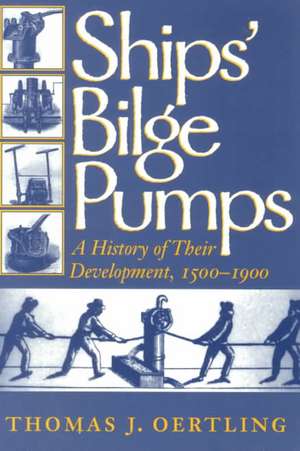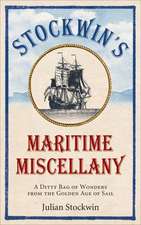Ships Bilge Pumps: Studies in Nautical Archaeology, cartea 0002
Autor Thomas J. Oertlingen Limba Engleză Paperback – 31 mar 1996
Preț: 100.10 lei
Nou
Puncte Express: 150
Preț estimativ în valută:
19.15€ • 20.05$ • 15.94£
19.15€ • 20.05$ • 15.94£
Carte tipărită la comandă
Livrare economică 31 martie-14 aprilie
Preluare comenzi: 021 569.72.76
Specificații
ISBN-13: 9780890967225
ISBN-10: 0890967229
Pagini: 130
Dimensiuni: 152 x 227 x 9 mm
Greutate: 0.2 kg
Ediția:New.
Editura: Texas A&M University Press
Seria Studies in Nautical Archaeology
ISBN-10: 0890967229
Pagini: 130
Dimensiuni: 152 x 227 x 9 mm
Greutate: 0.2 kg
Ediția:New.
Editura: Texas A&M University Press
Seria Studies in Nautical Archaeology
Textul de pe ultima copertă
All wooden ships leak, a stark fact that has terrified sailors since the earliest days of ocean travel. Maritime historical literature is filled with horrific descriptions of being aboard a slowly sinking ship. Starting from this human perspective, then, Thomas J. Oertling traces the five-hundred-year evolution of a seemingly mundane but obviously important piece of seafaring equipment - and tells the story of nautical innovation - in this one-of-a-kind history. Beginning with early sixteenth-century documents that recorded bilge pump design and installation and ending at about 1900, when bilge pumps were being mass-produced, Oertling covers a period of radical technological change. He describes the process of making long wooden pump tubes by hand, as well as the assembly of the machine-crafted pumps that helped revolutionize ship construction and design. Also given in detail are the creation, function, and development of the three types of pumps used from about 1500 to well into the nineteenth century: the burr pump, the "suction" or common pump, and the chain pump. Of further interest is Oertling's overall examination of the nature and management of leaks in ships' hulls. This work is well illustrated, with line art depicting the placement and use of pumps aboard the ships, early drawings showing pump design, and photographs revealing artifacts found at shipwreck sites. Of obvious interest to nautical archaeologists, maritime historians, and ship modelers, this book is written in an interesting and informative style, rendering it easily accessible to laypersons and amateur enthusiasts.











